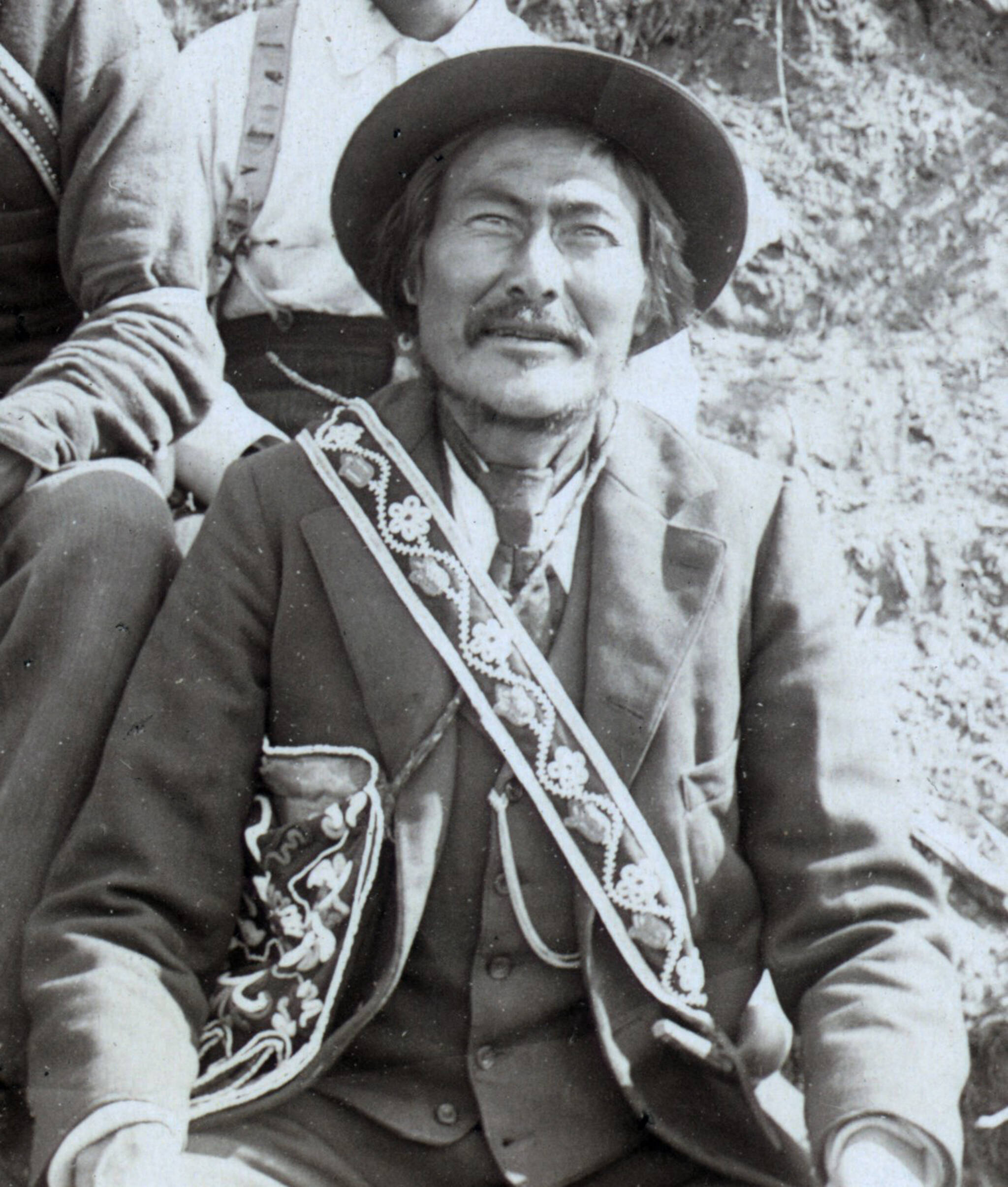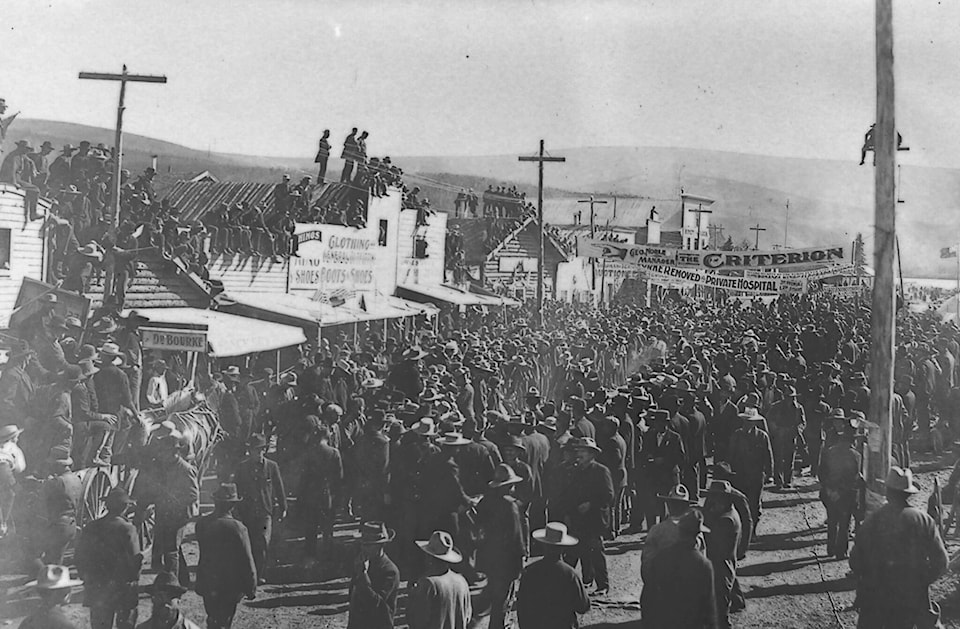2023 marks a milestone in the history of the Yukon. On June 13, 1898, 125 years ago, the Yukon Act came into effect, creating the political region we now know as the Yukon. This was a significant milestone in the colonization of the territory. Just two years before, the land was occupied by First Nations people and a few wandering prospectors, looking for the elusive yellow metal. The land was not well known to outsiders, and portions of the Yukon were yet to be mapped.
The gold rush was immortalized in thousands of photographs, letters and diaries, and in the prose and verse by the likes of Pierre Berton, Jack London and Robert Service, among many others. Films were made about the gold rush. 125 years later, these works still shape the way the world perceives the north, and who we are.
Because of the discovery of gold in the Klondike, the Yukon was overwhelmed by tens of thousands of newcomers. The chaos of this frantic period was overseen by the Northwest Mounted Police and a hastily assembled administration. Dawson City burst upon the landscape almost full-grown within a year, and became its political centre and the hub of the new economy. But the Yukon was a distant and remote British colony. For decades, the fate of the territory would be guided by powers thousands of kilometres away, in Ottawa, framed by a British colonial empire that at the time spanned the world.
This invasion brought dramatic impacts upon the original people who had lived here for thousands of years. Chief Isaac, leader of the Moosehide people, whom we now know as the Tr’ondëk Hwëch’in, acted as spokesman for their concerns. At every opportunity, he repeated the same message. He hearkened to better times before the arrival of European colonizers. The land was filled with game, and his people were happy and well fed. When the white man arrived, he noted, his people helped feed and clothe the newcomers. In return, these strangers killed the game, chopped down the forests and took away the gold. His people were left cold and hungry, and the white man, he said, didn’t care.
To make matters worse, their children were taken away to distant residential schools, and the very means of subsistence, hunting, fishing and trapping, were increasingly displaced by poverty, disease and marginalization.
The population of newcomers declined after the initial surge, but they never left. The early hand mining of the gold rush was eventually replaced by more mechanized and intensive methods that sustained the colonial economy. In the generations that followed, the miner with his gold pan became the iconic symbol of the territory.

Almost two decades after the Klondike discovery, the decline in population accelerated when nearly a quarter of the remaining settlers departed to fight in a world war on the other side of the globe. Most of those who left never returned. Yukoners were nevertheless proud of their contributions to the war effort
Fast forward another 20 years, and the territory was again flooded with outsiders. This time, it was the consequence of another war, and the threat of invasion by foreign armies. Within a few months, the Alaska Highway was constructed and the territory underwent dramatic changes that defined the way forward for a new generation. Whitehorse became the administrative hub, and within a few years, the capital was transferred here from Dawson. New lines of communication and transportation brought us within easy reach of the outside world. We were no longer isolated.
In the 1970s, a new voice emerged. The document, “Together Today for our Children Tomorrow,” defined a way forward for First Nations people, and land claims established the blueprint for a new generation.
The Epp letter, written in 1979 by then Minister of Indian and Northern Affairs, Jake Epp, placed the executive powers of government in the hands of locally elected representatives, and the territory took a giant step toward self-government.
Three decades later, First Nations have emerged from the ravages of the residential school system and marginalization to become a dynamic component in the Yukon’s economy. The territory has a new set of tools to chart its own course in the twenty first century.
I look back to the social, political and economic changes that have taken place since I first came to the Yukon as a student more than 50 years ago. The population was a third of its current size, and the territory lacked many of the skills and infrastructure that we enjoy today. It was still very much what we would call a frontier society.
We can look back even farther - 125 years into the past - when the traditions of thousands of years were uprooted and cast aside. The Yukon became an extension of British colonialism and even Canadian-born citizens more often identified themselves as British than as Canadian. This is no longer the image that we project to the world.
Looking at the changes that have taken place in the Yukon in the past 125 years it helps explain how we arrived at our current state. Both external and internal events have shaped the progression from a remote British colony to an autonomous jurisdiction. The contributions of many individuals have helped shape a distinct and unique northern community.
Over the next 12 months, to celebrate the 125th anniversary, I will be writing about the people and events that have contributed in various ways to the forging of our identity.
But I need your help. I want you to tell me what significant events, and which people you think are part of Yukon history. My contact information follows.
One thing is certain: if we want to create an accurate story of who we are, we must look farther back than 125 years. Perhaps as much as 12,500 years. And I would also like to hear what you have to say about that, too.
Michael Gates is Yukon’s first Story Laureate. His book, “Hollywood in the Klondike,” is now available in Whitehorse stores. You can contact him at msgates@northwestel.net.
